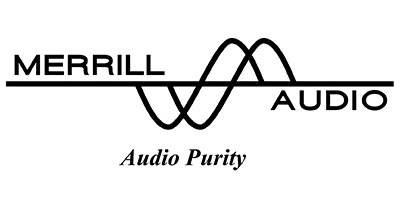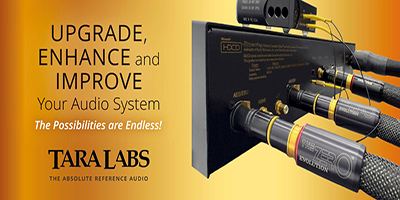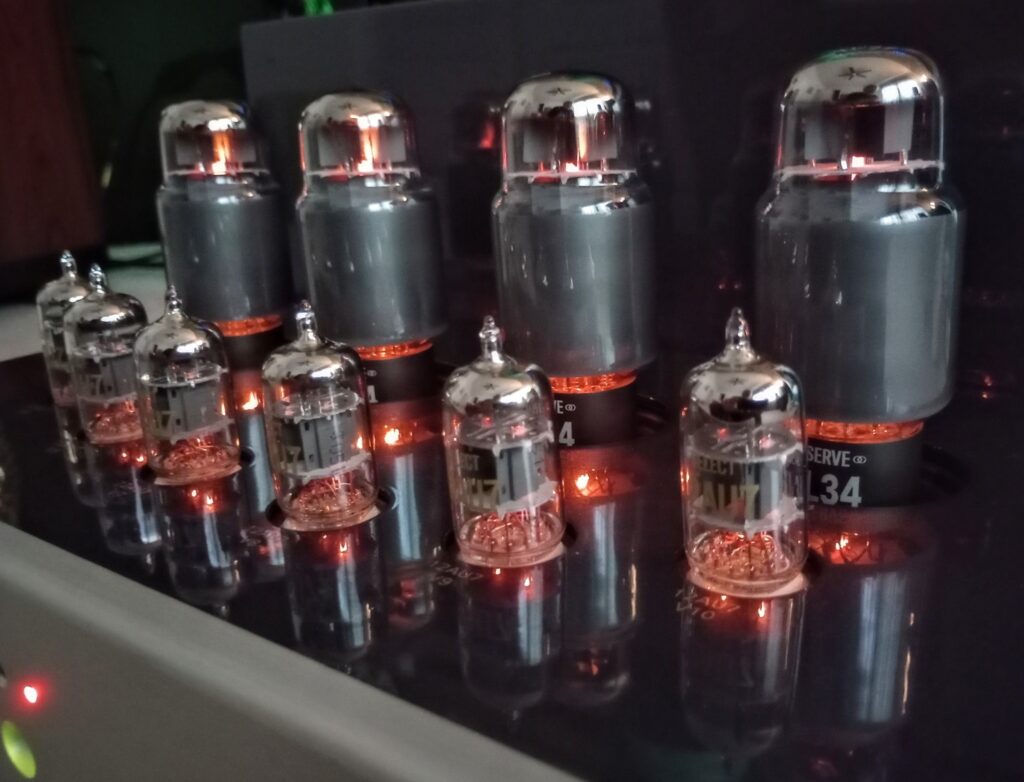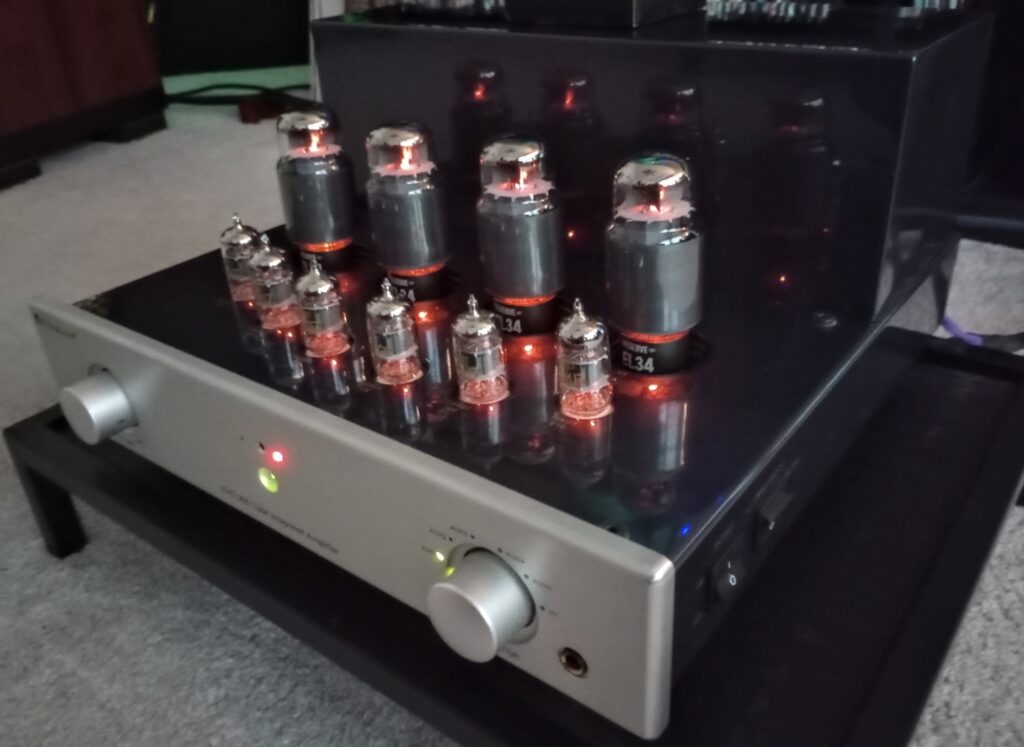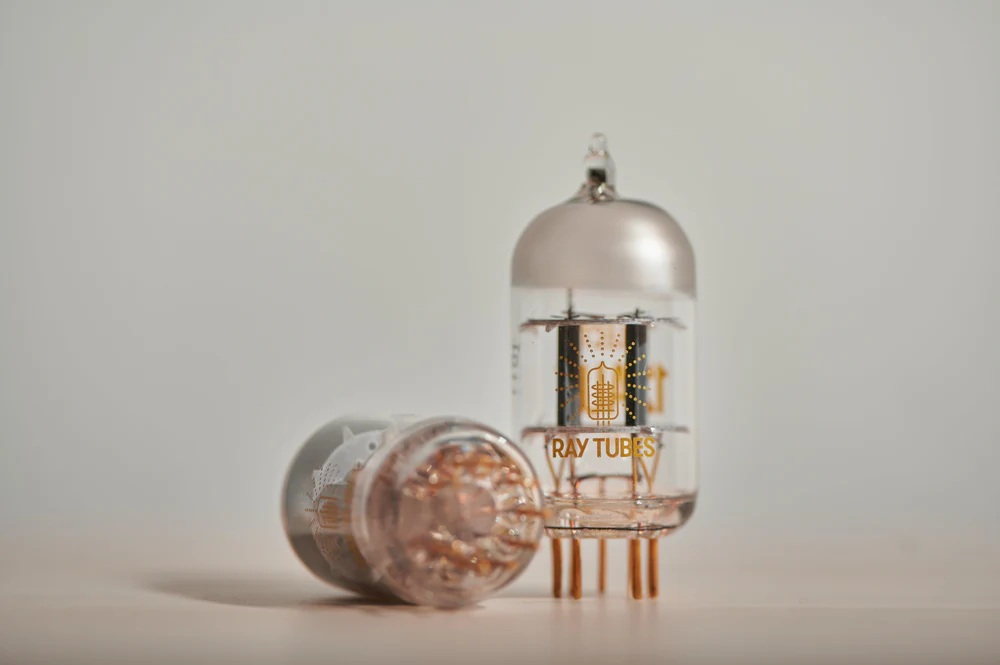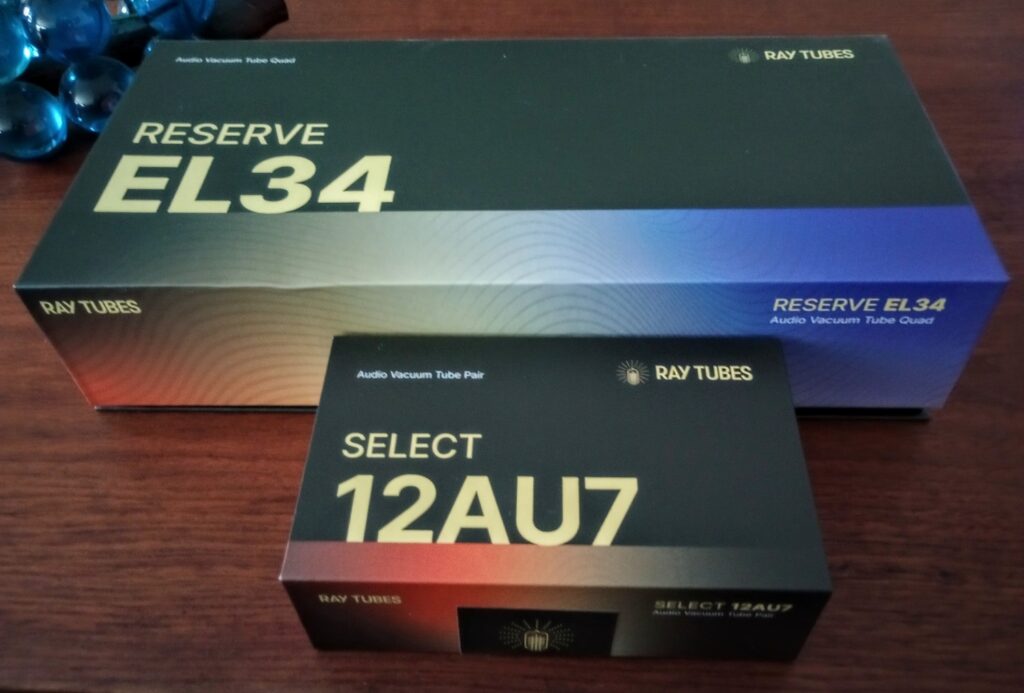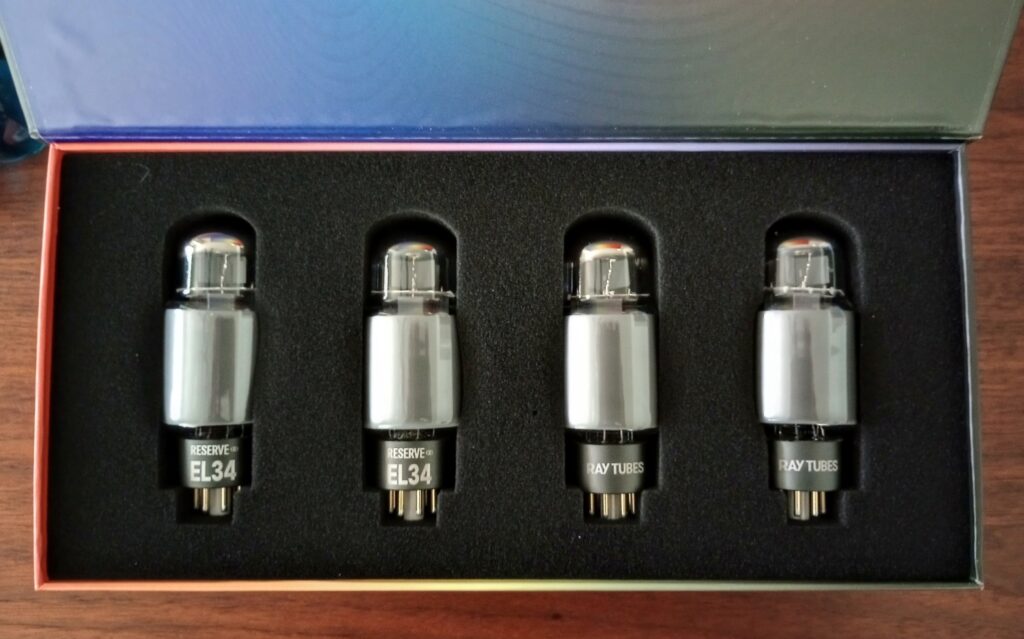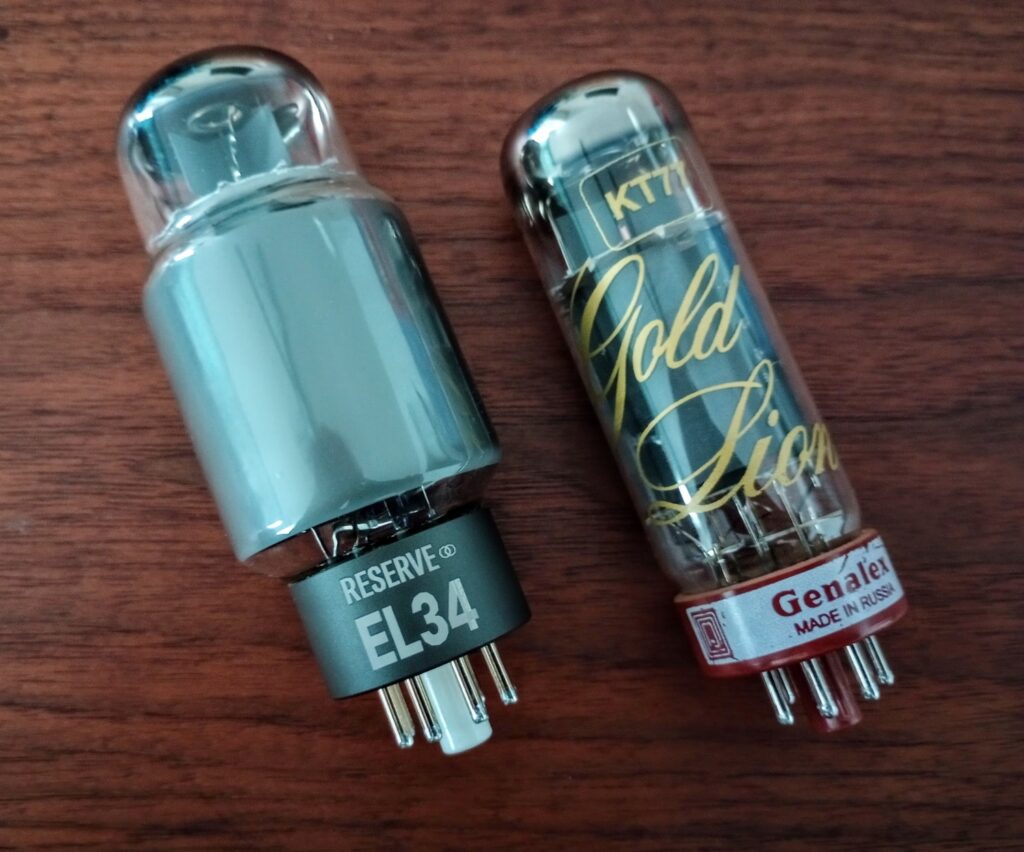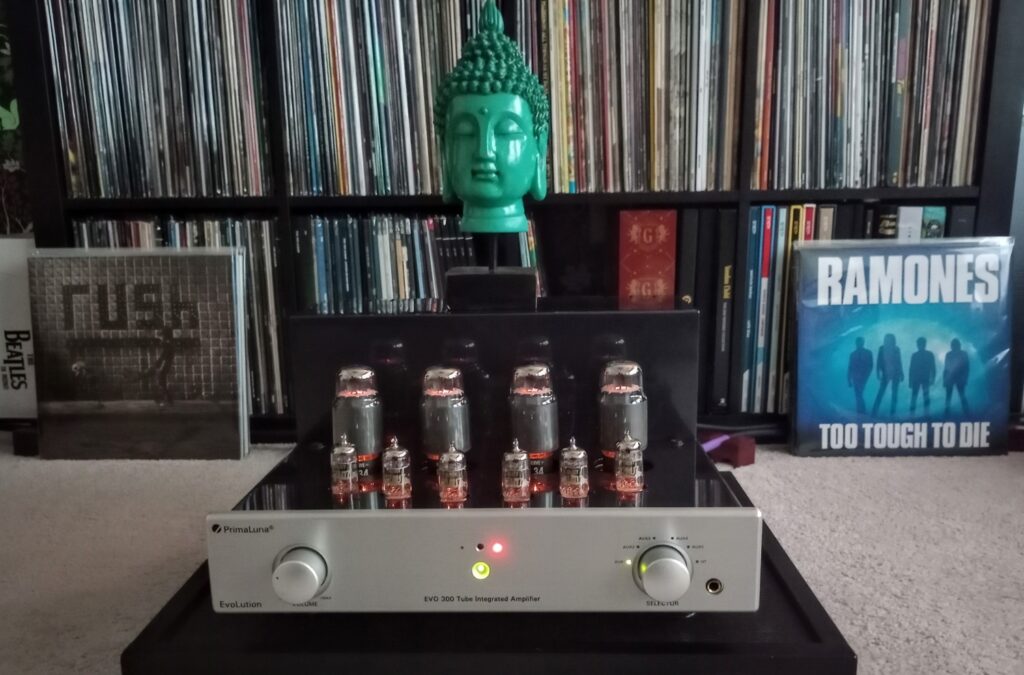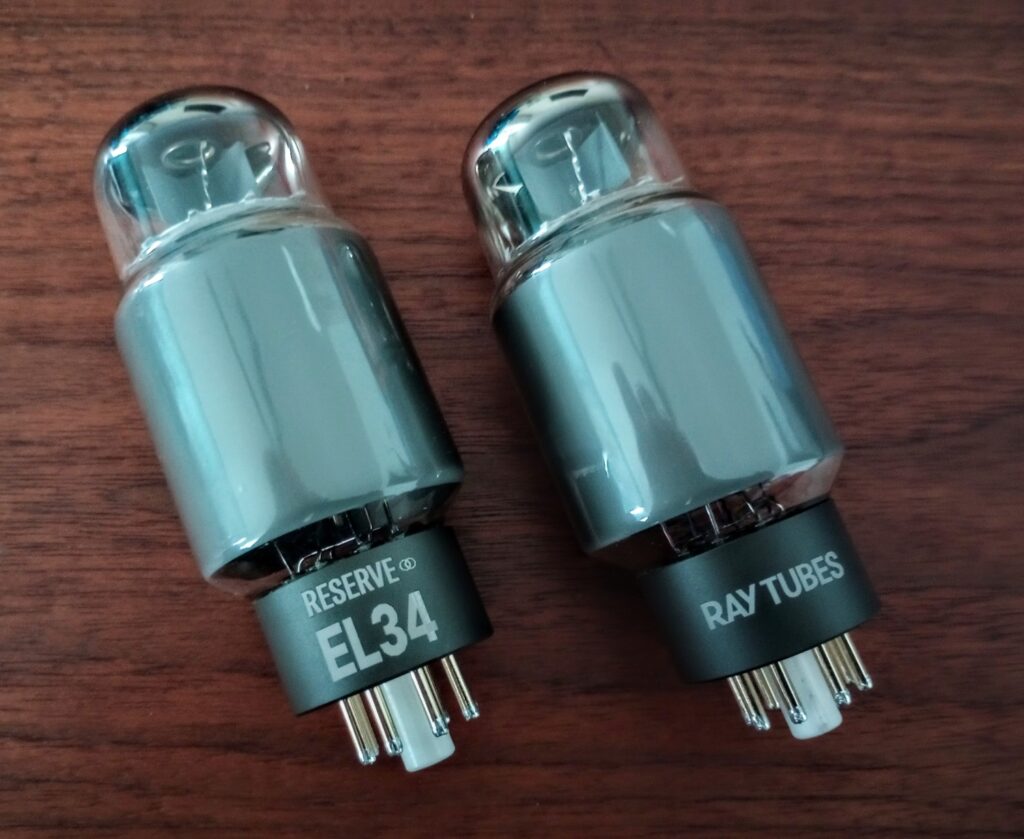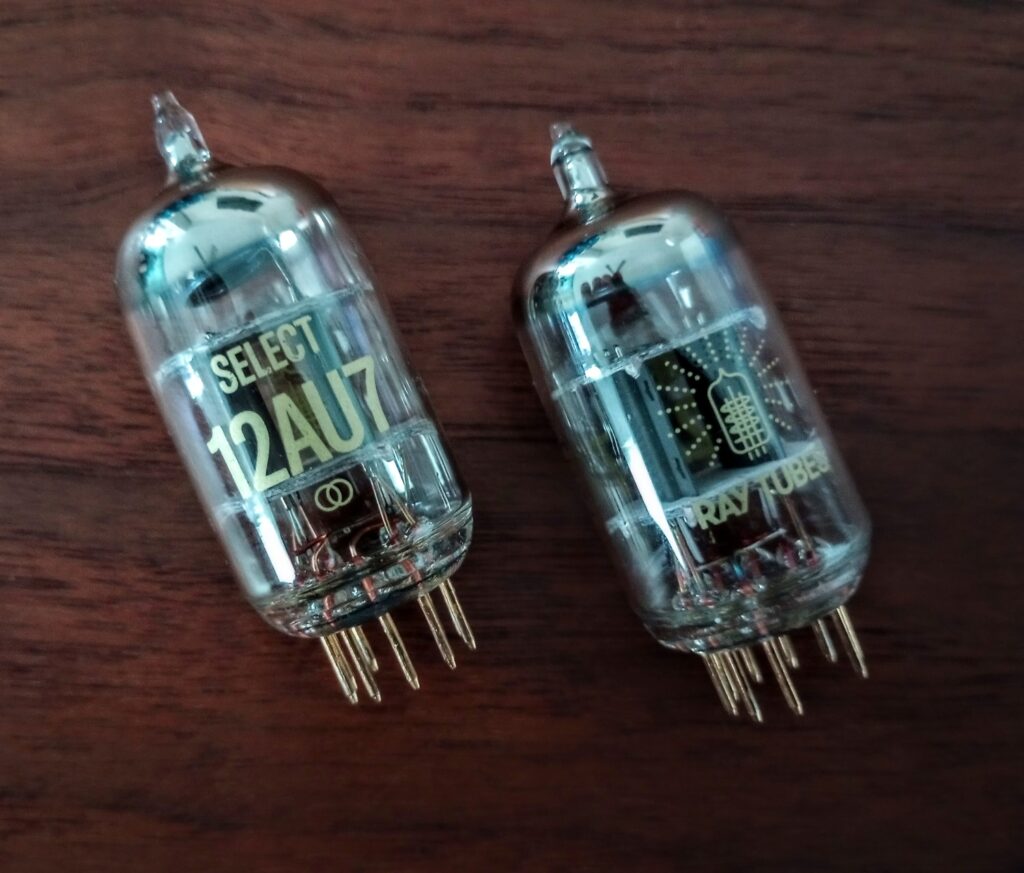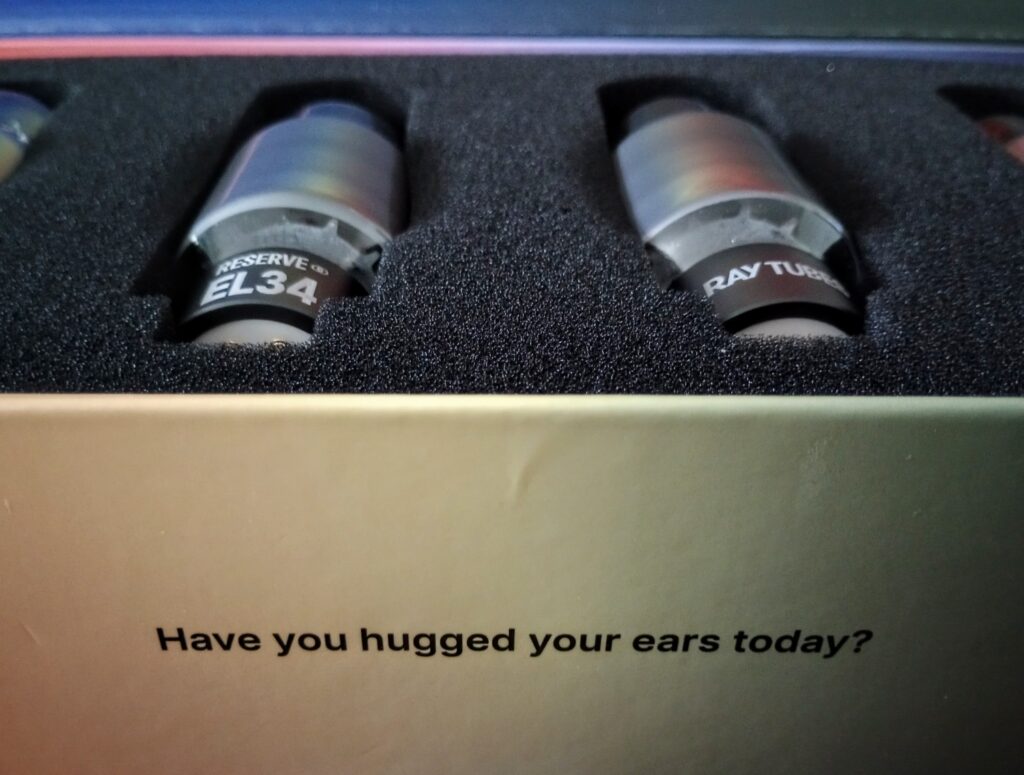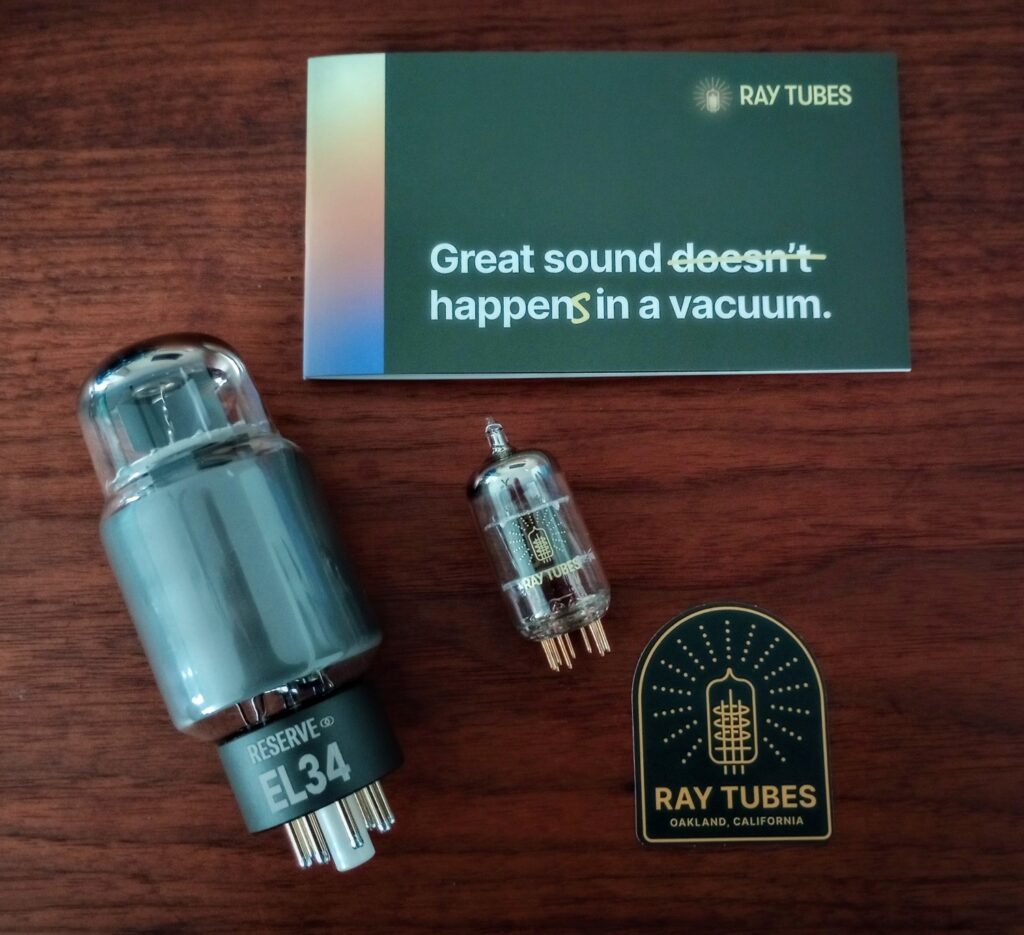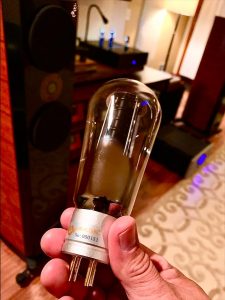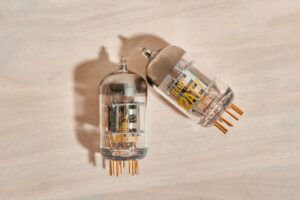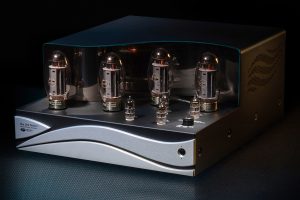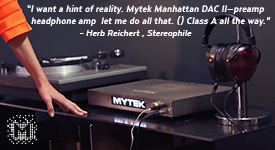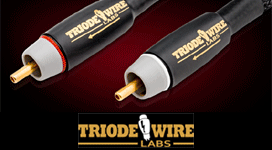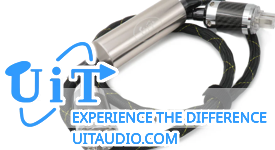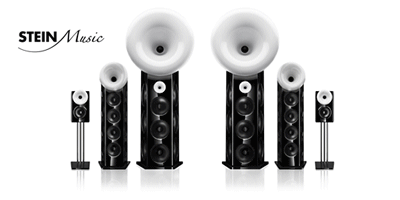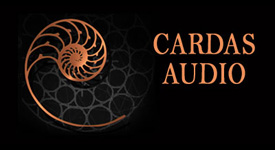Growing up in late-sixties north Georgia, music first really grabbed my attention around my tenth birthday. My family had an old tube Philco console stereo, and after school every day, I'd run home to spin a few records or listen to the radio. I had no concept of buying my own albums yet, and the limited selection of LPs I had access to included very early records from the Rolling Stones and the Young Rascals, jazzy middle-of-the-road stuff from the likes of Bert Kaemfert and Henry Mancini, and vocal records from Johnny Mathis and Peggy Lee. The lack of great music choices prompted me to try the Philco's FM tuner, where I could pick up stations from far away Atlanta that pushed the boundaries beyond the typical Johnny Cash or Merle Haggard tunes you'd hear on the pair of local AM stations. On FM I could hear music by The Beatles, the Byrds, more contemporary tunes from the Stones, the Kinks, Jefferson Airplane, Donovan, Jimi Hendrix, and even the Doors. And FM sounded shockingly great over the Philco—until it unexpectedly died a couple of years later, and was replaced by a GE close-n-play record player. My listening choices then narrowed considerably—either I'd listen to FM over a transistor radio, or I needed to buy my own records. I started mowing lawns to raise money to support my growing LP habit, and also saved for a better FM radio. My early tube phase only lasted a few years, but definitely made an impression on me.
But my love of music never diminished, and by the time I started building my own audio systems, tubes—in the US, at least—were no longer a large part of the mainstream. I frequented a ton of stereo shops as a young man, but never considered anything other than solid state amplification for decades. Most of those shops catered to a more mid-fi aesthetic, although you could find tube gear from the likes of Macintosh, Audio Research, and Conrad Johnson in a few select higher-end locations. Tube gear was so fringe, and so outside my relatively meager budget, I never actually ever considered attempting to acquire any. And my growing fascination with legendarily inefficient Magneplanar loudspeakers (I've owned seven pairs) even further distanced me from any consideration of tubes. I could never in my wildest dreams afford a tube amp that would effectively drive a pair of Magneplanars—it's been solid state all the way!
Until early 2020, when a new gig at Stereophile found me urgently in need of a tube amp for an upcoming loudspeaker review for Volti Audio. Volti's Greg Roberts preferred tube amplification for his highly efficient horn-based designs, and strongly recommended PrimaLuna as a brand that paired well with his loudspeakers. PrimaLuna's local dealer was an old friend, Alan Jones of Atlanta's HiFi Buys, who kindly connected me with his PrimaLuna distributor, Kevin Deal of Upscale Audio. Kevin assessed my needs and overnighted an EVO 300 tube integrated amp that had about 100 hours of burn-in time on the stock tubes. That allowed me to immediately proceed with my review, and the EVO 300 has remained in my system ever since, though with sporadic use in the first few years. Following my relocation to Charleston, South Carolina in 2022, I had the luxury of setting up an additional system that featured all-analog source equipment, and the EVO 300 has become its centerpiece. I've been reviewing a steady stream of new release and reissue LPs ever since, and the EVO 300 now sees almost daily use.
The PrimaLuna EVO 300 tube integrated amplifier
My experiences with the EVO 300 have been a voyage of discovery, although for the first few years, I didn't think its sound could get any better than what I was hearing from the stock PrimaLuna branded tubes. Which included a quad of EL34 power tubes and six 12AU7 small-signal tubes split between its input and driver sockets. Although I never really gave much thought to replacing the stock tubes—rolling them, as the tube aficionados say—I put a lot of effort into getting to know the inner workings of the EVO 300 and the overall philosophies of tube amplification. One thing that really struck me about PrimaLuna amps in particular is that they're compatible with a broad range of tube types other than their stock EL34. Including tube sizes like EL37, 6550, KT66, KT77, KT88, KT90, KT120, and even the gigantic KT150. After making the move to Charleston, my use of the EVO 300 ramped up significantly, and the hours on the stock tubes began to add up at an accelerated pace. I was reviewing over 100-plus albums each year here, often with multiple plays of each title, and I also listened to a ton of LPs simply for pleasure. Out of curiosity I priced replacement tubes, and started reading everything I could about rolling the small-signal input tubes, which seemed to be the most effective upgrade path to improving the sound of my amplifier.
But I was totally caught off guard by the catastrophic tube calamity that was looming just around the corner. I'd been working with John Soriano at Apos Audio on several review projects, and was particularly interested in getting a matched pair of the new Apos RAY Tubes Select 12AU7's for evaluation. The plan was to place them in the input sockets of the EVO 300, to explore their impact on its overall sound quality; that's when the wheels came off in the all-analog room. I ended up having to replace the full quad of PrimaLuna-branded EL34 power tubes—you can read about that convoluted process in my original review of the RAY Select 12AU7's HERE. In the aftermath, the EVO 300 was fitted with alternating matched quads of Gold Lion KT77 and Sovtek 6550 power tubes, in combination with matched pairs of NOS Brimar and the RAY Select 12AU7 input tubes. Those changes resulted in my complete reevaluation of the EVO 300's worth as an amplifier, and I reveled in its newfound ability to portray music in ways that thrilled me like never before. I was now hearing a significantly more musical amplifier, and the differences wrought by the upgraded tube complement couldn't have been more dramatic.
My close encounter with the CEO of RAY Tubes
Early this year, RAY Tubes really ramped up their Instagram presence with a steady stream of posts and stories; I'm regularly on the social media app as part of my daily process, and RAY's increased visibility there prompted me to become more proactive. I began following @raytubes.audio, and frequently liked and commented on their posts. Honestly, I had a bit of a hidden agenda: I felt a personal need to somewhat make amends for my original RAY Tubes review. Very late in that review process, I came to the realization that the relationship between Apos Audio and RAY Tubes had been inadvertently misrepresented to me. And it wasn't implicitly clear to me until just prior to publication of my review that Apos was only their distributor, and RAY Tubes was in fact the manufacturer—and I'd had zero contact with them during the evaluation. I had to scramble to generate a last-minute rewrite of my review that accurately presented the correct information.¹ So out of my love for their superb small-signal tubes, I wanted to support the brand in whatever small way I possibly could, and hopefully get to know them better. RAY Tubes is a fairly new company, and I was mightily impressed with their Select 12AU7 tubes, which I continued to regularly roll with the much more expensive NOS British-made Brimars in the PrimaLuna EVO 300. And I was finding it increasingly difficult to hear any significant differences between them.
Around that same time, I commented on a visually stimulating Instagram post that highlighted RAY's new Reserve range of tubes. To my surprise, the OP—who I assumed was their social media administrator or some other functionary—messaged me and started a conversation that stretched across a week or so. He eventually identified himself to me as "Nelson," and in my zeal to find out more about the new RAY Reserve tubes, I launched another web search and stumbled across a page that identified "Nelson" as Nelson Wu, who was in fact the CEO of RAY Tubes! Nelson also soon made the connection that I'd been the guy who reviewed the Select 12AU7 for Apos Audio and raved about them on Positive Feedback. Following a string of congenial calls and conversations, Nelson expressed his serious interest in having me hear the new Reserve tubes, and made the arrangements to send a full complement of both power and small signal tubes to me for evaluation with the PrimaLuna EVO 300.
I was definitely intrigued by the Reserve KT88's I'd seen on those Instagram posts, but Nelson quickly questioned my attraction to the KT88 versus EL34. My response was that while I was generally completely happy with the performance of EL34's in the EVO 300, I'd been wondering whether using a higher-biased tube like the KT88 might give my system a more dynamic presentation. Nelson mentioned that an EL34 variety was also being made available in the Reserve series, and that might be a good starting point, in addition to replacing all the small-signal tubes in the EVO 300 with Select 12AU7's. He was convinced I would hear things in the Reserve EL34's that I wasn't hearing from other manufacturers, and based on my already good experiences with his small-signal tubes, I was definitely interested! The full complement of tubes would be shipped direct from their facility in mainland China, and would probably arrive in a few weeks.
Vacuum tubes are still in fairly common use around much of the globe, and many of the tubes produced at the factory in China are intended for non-audio uses. That facility's output is often focused on a quantity-over-quality scenario, where most of the tubes they produce will easily perform whatever non-audio related job they're intended for. But that process changes during the manufacture of RAY Tubes, where RAY's engineers oversee all aspects of the production runs to guarantee the finished tubes meet their high tolerances. The resulting tubes are thoroughly tested, and those that meet RAY's very high standards are hand selected and separated into the three distinct categories offered by RAY. Including the more affordable Core collection (small signal tubes), the premium Select collection (a mix of small signal and power tubes), and the ultra premium Reserve collection (driver and power tubes). Only tubes that meet RAY's strict tolerances are meticulously selected for use. Once the individual tubes have been sorted and matched, they're then screen printed with the appropriate logo that corresponds with each tube's tolerance specification. It's a fairly involved process that guarantees that every ordered matched set of RAY Tubes is exactly that: perfectly matched.
More RAY Tubes arrive in the Low Country!
RAY Tubes arrive encased in a colorfully printed "beauty box" that's unlike anything else I've seen from any tube manufacturer at this price point. Most ship their tubes in fairly nondescript paperboard boxes, packed in shipping peanuts inside a cardboard box; RAY Tubes arrive encased in very cool, hinged-lid, foam-lined boxes with magnetic catches. Compared to the competition in this price range, and based on packaging alone, the RAY Tubes are an obvious cut above the rest; the protection provided to them by their packaging and their strikingly jewel-like appearance provides a stunning first impression! Most new production Chinese or Russian tubes I've experienced from Psvane, Ruby, Svetlanas, Sovteks, Mullards, Tung Sol, and even premium tubes like Genelex/Gold Lion tend to have rather pedestrian appearances with haphazardly screen-printed labels.² The RAY Tubes are more uniform in appearance and more elegantly realized; the Select and Reserve tubes also feature gold-plated pins, which definitely adds to their aesthetic, but also improves their impressive functionality. RAY Tubes simply exude perfection!
Premium RAY tubes are meticulously manufactured, rigorously tested, and hand selected to confirm that they achieve a higher tolerance standard. Only a small percentage of tubes—the very best from any given production run—will ever emerge from the factory for RAY Tube branding. Select and Reserve tubes are not only tested for their superiority, they're also placed in amplifiers and listened to under real world conditions by audio engineers. RAY Select tubes provide significantly more nuanced sound than the very good tubes from the Core collection; they're undeniably the best of the best of any given batch. For the majority of listeners, tubes from the RAY Select collection are the best they'll ever need, providing unmatched sound quality while also enabling unbridled amplifier performance. That same level of impeccable manufacturing and individual tube vetting also extends to RAY's Reserve line; its tubes are held to an even higher standard of excellence. No expense is spared in their creation, and RAY Reserve tubes represent the pinnacle of the company's design philosophy. Where glass bulb optimization, exotic coatings, and the finest high-purity metals are used in their production to ensure their superiority.
Opening the box that contained the RAY Reserve EL34 tubes revealed another surprise: their shape is unlike any other EL34 or variant I've ever come in contact with, and the glass bulb more closely resembles the type you typically see with KT88 varieties. I did an online search, and could only find one tube, the Shuguang S6CA7-T (an EL34 variant) that looked anything like the Reserve EL34. The Reserve tubes are coated with a monocrystalline carbon layer for improved electron flow, increased heat dissipation, and reduced noise. The coating offers an impressively distinctive appearance to Reserve tubes, and functionally provides heat dissipation to help extend tube life—the power tubes are responsible for the majority of heat generation, so that's a very welcome benefit. RAY Tubes' level of quality control is so intense, they offer a one-year replacement warranty on all tubes against any manufacturing defects, which is pretty astonishing for any vacuum tube manufacturer. When I got the new set of Genelex/Gold Lion KT77's last year, prior to their arrival, I stumbled across several online threads that maintained that new Gold Lion tubes would randomly fail within the first week of operation—and one of mine most definitely did! It was within the 90-day warranty, but otherwise at $100 per tube, that could have been a bitter pill to swallow, and makes RAY's one year warranty golden for tube users' peace of mind.
Listening through a full complement of RAY Tubes
Clicking on my name in the header above reveals the components in my dual audio systems. At this point, the RAY Tubes have only been used for evaluation in my all-analog source system. It features a pair of standmount XSA Labs Vanguard compact monitor loudspeakers that offer an updated homage to the classic British LS3/5A broadcast monitor standard. The Vanguards run full-range in tandem with a pair of Caldera 12 subwoofers; the subs add a couple of extra octaves to the overall system response, which presents a remarkably coherent aural impression of live music in my listening environment. The system also features PS Audio's superb Stellar phono preamplifier, and, of course, the PrimaLuna EVO 300 tube integrated amplifier. I spin both mono and stereo LPs in this system, utilizing a ProJect Classic EVO table that's mounted with an Ortofon Quintet Bronze moving coil cartridge, and a highly modified Rega Planar 2 table that's fitted with an Ortofon 2M Mono cartridge for strictly mono playback. This system provides unquestionably the finest analog playback I've experienced in any of my rooms across the decades; the EVO 300 amplifier upgraded with RAY Reserve and Select tubes is significantly responsible for the system's goodness.
The EVO 300's stock configuration features PrimaLuna branded tubes, including a quad of EL34 power tubes and six 12AU7 small-signal tubes. Four of the 12AU7's are drivers, with the remaining pair placed in the input sockets; that pair is widely considered to provide much of the amp's sonic character. The EL34 is revered by audiophiles and musicians alike for their inherent musicality, and feature an increased level of midrange sweetness that adds articulation and refinement, especially to vocals. Reserve EL34 tubes are a classic pentode power tube design that's equally at home in triode and ultralinear amplifier configurations. They're detailed without being overly-analytical, and offer a really good musical balance of tightly controlled bass, a clear and natural midrange, and sparkling, transparent highs. Select 12AU7 tubes are a dual-triode design, and provide controlled bass response, a balanced midrange with exceptional clarity, detailed, smoothly extended treble frequencies, and superb transient response that's both airy and articulated.
Even though the EVO 300 can accommodate a surprising array of power tubes, its "Smartwatt" circuitry is designed to carefully control each tube's plate and screen voltage precisely. While that greatly increases tube life, it also effectively limits the power output of more powerful tube types. For example, in a PrimaLuna amp, a quad of EL34 tubes will output around 44 watts per channel; by inserting a quad of more powerful KT120 tubes, one might logically expect at minimum a doubling of the wattage output. The Smartwatt circuit only allows an output increase of a few watts per channel; PrimaLuna's philosophy is that output power is only one factor in a tube's ability to effectively drive a loudspeaker. Different tube varieties exhibit different tonal characteristics, and in PrimaLuna amps, you'll hear tonally different flavors of the tube experience. You'll definitely experience an increase in dynamics and bass slam with more powerful tube varieties, but not necessarily a massive increase in watts per channel.
Attributing specific changes to a system's sound quality based on tube upgrades can be a bit of a slippery slope; there are no measurements that you can point to that would indicate any kind of quantifiable or empirical improvements. But I'd had nine-plus months of listening to the EVO 300 with no other system changes other than to the tubes that have been in place. That includes fairly frequent swaps between the Gold Lion and Sovtek power tubes, along with regular rolling of the input pair of NOS Brimar 12AU7 and the RAY Select tubes. My ears tell me the Brimars and Select tubes are so very close in character that I've stopped rolling the Brimars and have been listening strictly with the Selects in place. I'm still resolute on this: after only a couple of months, the full complement of Select and Reserve tubes has resulted in a clear overall difference in the sound of my all-analog system. And even though the conventional wisdom of countless individuals would tell me that upgrading the four 12AU7 driver tubes shouldn't really contribute to my overall quality of sound, having a matched sextet of RAY tubes in place has clearly improved every performance metric of the EVO 300.
My impressions in every listening session have been consistent since the RAY Tubes arrived: they imbue everything that plays with a perfect balance of analog delicacy and impressive dynamics. Each and every listening session is an almost ethereal experience! They add a new level of magic to my music I never dreamed possible; when the music requires impressive dynamics, the Reserve EL34's are definitely up to the task, and the EVO 300 never runs out of gas, regardless of how high I push the volume level. Even with extreme volume levels with bands like Yello and Kraftwerk, I don't feel like the amp is restricted the way it was with the stock PrimaLuna tubes. More importantly, Reserve and Select tubes exhibit exceptionally low noise and microphonics, and I don't hear any increase in background noise at any playback level. Of course, that's not an issue with pounding backbeats from the likes of Yello and Kraftwerk, but even at reference levels with more intimate acoustic performances, there's still no noise, and that always elevates the impression of realism during my listening sessions. More intimate performances take on a "live in your room" dynamic; you really feel as though you can reach out and touch the vocalist or performers in the soundstage. And more forceful rock, metal, and electronica are presented from the very small XSA Vanguards with a level of slam, dynamics, and effortless delivery of complex harmonics that simply defies belief—you'd never expect these compact monitors to project sound with this kind of massive scale of image. I've been listening to music of every genre, including not only LPs I'm intimately familiar with, but also to new records that have been arriving for review on a nearly daily basis. Everything sounds amazing over this system!
It's a wrap!
Prior to my analog system meltdown last year, I'd never given much thought to upgrading the tubes in the EVO 300—I thought the stock tubes provided playback that was as good as it gets. Replacing the pair of input tubes was an eye-opener, but replacing the entire tube complement with Select and Reserve tubes has improved my impression of this amplifier by an order of magnitude. The RAY Tube upgrade has so transformed my listening experiences, I feel as though I easily could be listening to an amp that retails for more than double the price of the EVO 300. The lackluster performance of the stock PrimaLuna tubes blinded me to this amplifier's capabilities—but no more, my eyes have been opened! And I no longer even worry at all that I don't get enough watts from the EL34's—watts aren't even part of my current thought process during listening sessions, I'm so entranced by the music. And replacing all six 12AU7's with matched Select tubes has definitely solidified the EVO 300's performance.
RAY Tubes are sold worldwide, and are distributed for purchase in the US by Apos Audio. Many thanks to RAY's CEO Nelson Wu for his inexhaustible fountain of tube knowledge, his generosity of spirit, and for making this evaluation happen! RAY Select and Reserve tubes aren't inexpensive, and the current tariff environment in the US has pushed their prices slightly upward. But compared to the pricing of some of the more esoteric brands out there, they're an absolute steal—especially considering how very much they've transformed my system and enhanced my listening pleasure. RAY Select and Reserve tubes come very highly recommended!
RAY Select 12AU7 tubes
Retail: $207/matched pair
RAY Reserve EL34 tubes
Retail: $989/matched quad
RAY Tubes
raytubes.com
Apos Audio
apos.audio
All images supplied by RAY Tubes and the author.
¹ At the point when my 2024 review of RAY 12AU7 small signal tubes began, all website information and even the screen printing on the supplied tubes identified them as "Apos RAY" tubes. That created a certain level of confusion in my mind in terms of who in fact was the manufacturer, and who was the distributor, until Apos' John Soriano filled me in at the eleventh hour with the correct information. All RAY Tubes now ship screen printed with the "RAY Tubes" logo.
² I had some experience in the early 2000's with a single-tube phono preamp/headphone amp from Rolls Bellari; it was not particularly well-built, and was really more like a toy. In my initial enthusiasm, I bought a range of 12AX7 tubes for it, to experiment with tube rolling. It was a generally unsatisfying experience, but the exposure to different brands of new production tubes and the lack of "wow factor" in their appearance and packaging was definitely an education.


